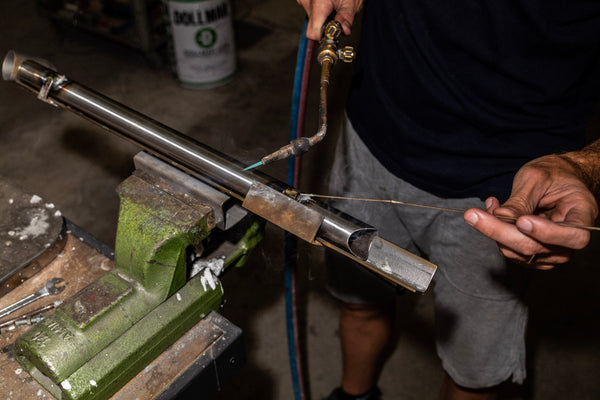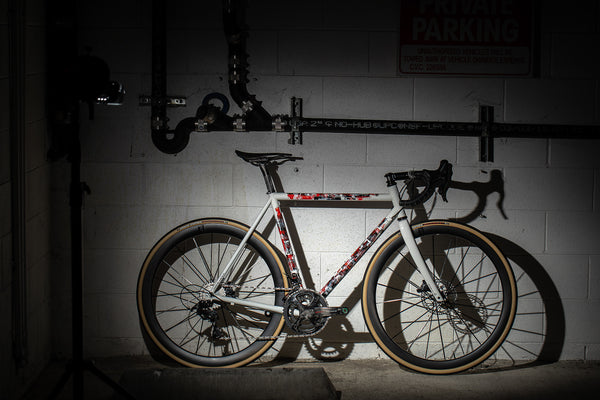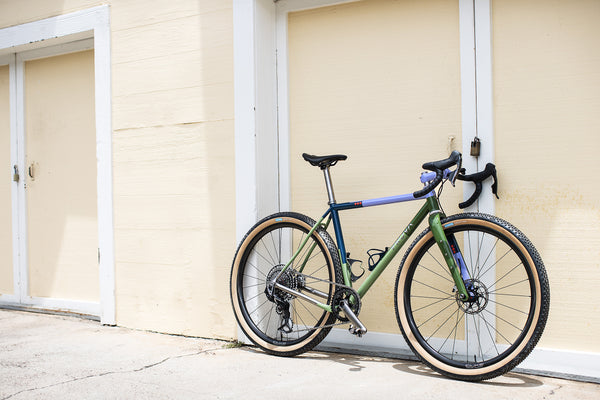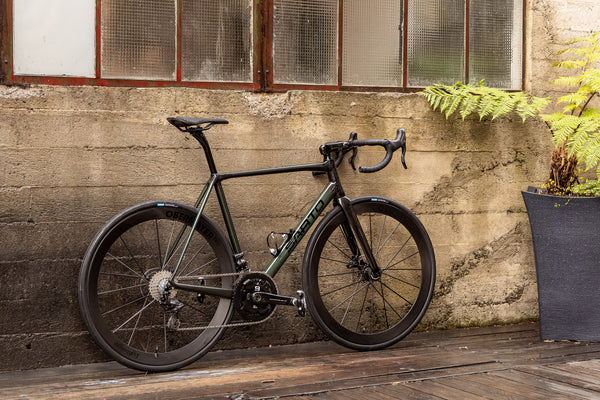Life is a game of goodbyes. No matter how long you think something will be with you, before long, it's worn out, or you're throwing it out - gone! Although, to be fair, most good quality cycling things things can be repaired and renewed, so personally, we'd hope to keep our gear for the long haul, and don't we just feel dandy about that. Anyway, to goodbyes. Today, we welcome a new bike fitter to Above Category and say goodbye to the powerhouse who started our bike fit programme, Jessica. Fair winds, Jess, and thanks for everything!
Our new fitter, Tim Jannisse, is quite the overachiever. A man with so many letters after his name, he risks getting stamped and stuffed in a sack every time he goes to the post office. To learn more, we caught up with Tim to give him the once-over. Here's the Q&A.
__________________________________________
Your credentials, please.
PT, DPT, OCS (I will soon have FAAOMPT to add, as this is my fellowship credentials - stands for "Fellow of the American Academy of Orthopedic Manual Physical Therapy"). I sometimes include "SICI" as this is the governing body of my bike fit certification.
When did you start doing bike fits?
I started my bike fit journey in 2021 with the level 1 and 2 Serotta International Cycling Institute (SICI) courses. To complete the level 2 certification course, I was required to complete ten detailed bike fits, which I finished in early 2023. The ten fits took so long to finish due to my full-time enrollment in an orthopedic physical therapy residency and a fellowship program for orthopedic physical therapy.

Have you always been interested in the bike? Is it your primary physical pursuit?
Cycling has always been a massive part of my life, ever since learning to ride a bike at two years old. In high school, I started the mountain biking club, and I was the cycling club president in college. I started racing bikes there and intermittently throughout my doctoral physical therapy program. Cycling continues to be my main physical outlet and continues to expand with dabbling in other cycling disciplines.
Do you have a bike fit philosophy, a certain approach?
My bike fitting philosophy takes components of my physical therapy background and my training at SICI. The most important element of my fits is listening to the client and allowing their concerns/goals to determine the pieces of the fit that I will emphasize. My physical therapy background also allows me to perform in-depth physical examinations so I have a very good idea of how the cyclist moves before they even get on the bike. Finally, once on the bike, I typically look at the entire cyclist and consider glaring issues first, then I will move through my sequence of assessing the three points of contact in order from the feet, pelvis and hands.

How much of doing a fit is understanding the physiology and history of the rider? Injuries, quirks and so forth.
It's extremely important to consider for each cyclist. All of my bike fits start with a thorough subjective history, including riding history, previous injury list, current exercise routine, occupation, requirements of weekly life, and recovery elements such as nutrition, sleep and stress.
Is a fit a snapshot, or should it keep someone happy in the saddle for many months/years?
A bike fit is just a snapshot of that person in that moment, meaning it is constantly changing. Everyone knows that we lose function as we get older, less flexible and/or stronger than we were years ago. Many might not consider that we even have different flexibility and relative strength from the morning to the evening of the same day. Therefore, the bike fit we perform in the shop will put you into an optimal range that allows you to ride as comfortably as possible for how you are presenting at that point in time.

What are the most profound changes you can make to someone's bike setup?
This is very dependent on the type of bike I am fitting. For example, TT/tri bikes need to consider crank length due to the extreme aero positioning. Road bikes need to consider the saddle-to-stem drop because most roadies love their stems slammed.
What are the most common fit issues you see out on the road? Can you spot a lousy fit a mile away?
The most common issue I typically see is saddle position, with excessive height leading the way. The human body is incredibly adaptive, some more than others, so I cannot say a fit is bad unless it is wildly outside the normative range that would be unlikely for someone to compensate for the position. That being said, I can spot suboptimal positions without an issue, but that position might also work for that person based on their anatomy/physiology.
Would you recommend everyone to have a fit?
The short answer is yes. Even a very infrequent recreational rider can benefit from a bike fit. Bike fits cover much more than your position on the bike; they involve education around cycling, general health and fitness, and that's important for every human.

What bike do you ride?
Depends on the day and the type of riding. Mountain biking is either on my Santa Cruz Bronson or SC Chameleon. Gravel riding is on my Marin Gestalt. Road riding is on my Specialized Roubaix, or when I want something rowdy, I ride my brakeless fixie bike around town.
What do you hope to bring to AC and our following?
My goal is to provide high-quality, world-renowned bike fitting services and help cyclists become healthier humans on and off the bike.
__________________________________________
To book a fit with Tim, please visit our Bike Fitting page.






Back to Journal